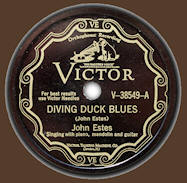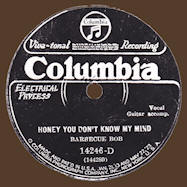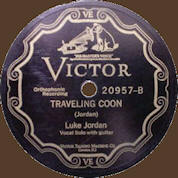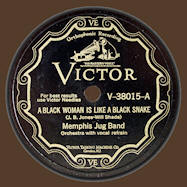
Painting © 2004 Loz
Arkle
Website
© Copyright 2000-2011 Alan White - All
Rights Reserved
Site optimised for Microsoft Internet Explorer
Blues At Sea |
||||||||||||||||||||||||||||
|
Conclusion For my sources on sea shanties I have drawn almost exclusively from Hugill's book. There are two main reasons for this. Firstly, the latter has written what is recognized as THE authoritative work on the subject, and more importantly there are more than enough examples of shanties quoted which have obvious connections with the Blues of the Deep South. Of course Hugill doesn't mention the Blues and in fact does not see the Southern U.S. black as a prime influence when discussing interplay between the sea shanty and other musical/folk genres. "Although the West Indian is rarely referred to by writers on shantying, I feel that he was responsible for producing far more sea-man's work-songs than any Negro of the Southern States of America." (1). Without studying the folklore, and especially the blues, of the latter, this would be a tenable view. In the U.S. in the first half of the 19th. century, songs from minstrelsy, 'coon songs', plantation melodies, children's game-songs, etc. would 'cross over' into the sea shanty. Many of these were parodies, by white singers and counter-parodies by blacks, but there were also genuine black work-songs, folk-tales, and so on. Despite Hugill's view, he freely admits "one of the most popular of all shanties, 'Shenandoah' came from the southern states of America..." (2). As has been said, this early American Southern scene was imbued with British song-material from various sources. Although Roberts says "It would be a mistake to overemphasize the amount of British balladry in the black song of the nineteenth century, transmuted or not ... What did happen was the adoption of appropriate images and of the general ballad form, which was then altered and used for new creations." (3). Nevertheless, whichever shape it took, British balladry and folk song appeared in the Blues in a quantity which up to now has been rather under-emphasized. Whether it be via vaudeville/travelling medicine-shows (see "The English Music-Hall Connection") or some other route of oral transmission (see "British Colloquial Links And The Blues" and "British Superstitions And The Blues" for examples); or via the sea shanty. As Courlander says "It is obvious that Negro song makers in America at a very early date became aware of English, Irish, Scottish, and, in the Louisiana region, French ballad styles. The evidence is widespread in Negro folk songs." (4). Admittedly, not too many songs from the British Isles survived in their entirety in the Blues but enough of a segment or part-stanza often reappeared in Robert's process of black songsters adoption which were still recognisable. The silver spade/golden chain image discussed in chapter II is a good example. Hugill cites, as one of his sources in 1931, a West Indian shanty man calling himself "Harry Lauder"; it is significant or coincidental? that he used the name of one of the most popular British music-hall acts from the turn of the century. "Lauder" gave Hugill his shanty examples which could have been drawn from the Gulf ports in general and Mobile Bay's 'shanty-mart' in particular. As could other songs claimed for the West Indies. Whilst discussing the Mento, "a musical form that is somewhat reminiscent of the traditional Trinidadian calypso, but grown from distinctively Jamaican roots." (5). Bilby writes: "Many of the better known Jamaican folk songs "Linstead Market", "Solas Market", "Nobody's Business," and so forth are typical mento tunes." (6). The tunes, quite probably, but the lyrics, without hearing the Jamaican song, of the last title listed by Bilby, looks as if it has the same theme as "T'ain't Nobody's Business" which was recorded by Blues singers such as Frank Stokes, Bessie Smith, Tommie Bradley and scores of others in the pre-war era. One of Bessie's regular pianists, and often-travelling companion, Porter Grainger, even claimed co-authorship with one E. Robbins; but the song is obviously part of a long-standing black tradition in the Southern States from the end of the 19th century. Near the end of his African search for the musicological roots of the Blues, Sam Charters concluded "As I looked at the tapes and notes that lay over the dirty concrete floor of the room (in Mali on the West African coast) I understood, finally, that in the blues I hadn't found a music that was part of the old African life and culture. Things in the blues had come from the tribal musicians of the old kingdoms, but as a style the blues represented something else. It was essentially a new kind of song that had begun with the new life in the American South." (7) But that "something else" included a root of the Blues that Charters wasn't seeking in West Africa - the lyrics. The latter, so essential and central, to the early Blues, drew from varied sources. These included British balladry, folk song and English music hall ditties which were adopted by the American and British sailors in the form of nineteenth century sea shanties. The latter are obviously part of the very important non-African heritage of the Blues. Notes:
© Copyright 1991 Max Haymes.
All Rights Reserved.
Website © Copyright 2000-2012 Alan White. All Rights Reserved. |
||||||||||||||||||||||||||||












